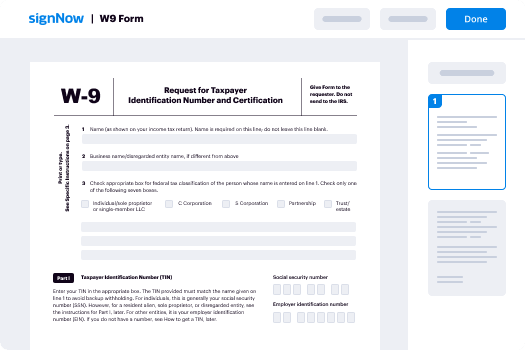1 THE FAMILY COURT OF THE STATE OF DELAWARE
Form 509 I (Rev. 11/98)
INSTRUCTIONS FOR CHILD SUPPORT CALCULATION
PREFACE
The Family Court of the State of Delaware has established the Delaware Child Support Formula under Civil Rule 52(c).
This formula outlines the procedure for determining child support awards in the state of Delaware. The formula is
based on the following principles:
ŸEach parent is entitled to keep a minimum amount of income for their basic needs.
ŸThe child(ren)'s basic needs are taken care of before the parents may retain any additional income.
ŸIf income is available after the primary needs of the parents and child(ren) are taken care of, the child(ren) is
(are) entitled to share in any additional income of the parents.
In determining each parent's child support obligation the Court considers each parent's ability to pay. Ability to pay
includes: the health, income and financial circumstances, and earning capacity of the parties, including the children. The
manner of living to which the parties have been accustomed when they were living under the same roof and the general
equities inherent in the situation are also considered. See 13 Delaware Code §514.USE OF THE DELAWARE CHILD SUPPORT FORMULA
The Delaware Child Support Guideline serves as a rebuttable presumption for establishing all child support awards in
the state of Delaware. The Court will use the formula in setting support unless it finds that the results would not be in
the best interest of the child(ren) or would be inequitable to the parties involved. See, e.g. Dalton v. Clanton, Del. Supr.,55 A.2d 1197 (1989).
NET INCOME
Net income is used for calculating the child support amount under the Delaware Child Support Formula. Figure net
income by taking monthly gross income and subtracting allowable payroll deductions. Monthly gross income and
allowable deductions are defined below.
Note: all figures for this section and other sections must be made in monthly amounts. If figures are given in weekly
amounts then multiply the amount by 52 and then divide by 12 to get the correct monthly amount. If figures are for bi-
weekly amounts then multiply the amount by 26 and then divide by 12.
Line 1
A--Monthly Gross Earned Income: Monthly Gross Earned Income includes income from salaries, wages,
commissions, and bonuses; and income from self employment. Document all earned income with the most
recent tax returns, W-2 Forms, and the three most recent pay stubs. See, e.g. Kane v. Kane, Del. Fam., No. 341-87Gallagher, J., (April 4, 1989).
B--Monthly Gross Other Income: Monthly Gross Other Income includes but is not limited to dividends,
severance pay, pensions, interest, trust income, annuities, capital gains, social security benefits, veteran's benefits,
workers' compensation benefits, unemployment insurance benefits, disability insurance benefits, gifts, prizes, and
alimony or maintenance received.
Expense reimbursements or in-kind payments received by a parent in the course of employment, self-
employment, or operation of a business should be counted as other income if they are significant and reduce
personal living expenses. Such payments might include a company car, free housing, or reimbursed meals.
Note: Any social security disability benefits as well as pension/disability benefits issued by private corporations
paid directly to a minor child (included in this support action) on behalf of a disabled parent shall be added to the
disabled parent' s income. That parent will then receive a dollar-for-dollar credit off of the support obligation for
these payments received by the child. When a child receives social security disability benefits on his/her/own
behalf, they shall be counted as income of the custodial parent or the parent receiving the benefits on behalf of the
2 child(ren). Social Security benefits of children who are not included in the child support order will not be
included.
Exclusions from income: Temporary Assistance to Needy Families (TANF), Supplemental Security Income (SSI)
if it goes to the parents, and Food Stamps (FS).
Attributed Income: When an able parent is not working full time or is working below full earning capacity, determinewhy there is a limitation on earnings. See, e.g. DCSE v. James Barrows, Del. Supr., No 147, 1989 Holland, J.(February 21, 1990); R.T. v. R.T., Del. Supr., 494 A.2d 150 (1985); Dolgas v. Dolgas, Del. Fam., No. 1974-85,Gallagher, J. (December 9, 1988). If the obligor has voluntarily chosen to earn less than his/her capacity the Court
will attribute income. First, look at the obligor's previous earning history to see what type of earnings potential
he/she has. If no earnings history is present look at the obligors employment qualifications. Determine what
someone with comparable qualifications would earn in the local job market. The Court may use wage surveys
published by government agencies to assist in attributing income. These surveys will be available in the Law
Libraries of each Family Court. If income is attributed in either of these two fashions use withholding tables to
determine the appropriate withholding. The minimum amount that can be attributed under any of these
circumstances is a gross monthly income figure of $1,052.
Note: If a party fails to appear, or bring adequate income information to Court he/she may be attributed with at
least as much income as the other party.
C--Total Monthly Gross Income: Total Monthly Gross Income is the sum of Monthly Gross Earned Income (Line
1A) and Monthly Gross Other Income (Line 1B).
Line 2--Total Tax: Determine the amount of tax withheld in a month. Base withholding on Single tax status with one
(1) exemption. Look up the amount of withholding on the withholding tables. Enter the amount for each parent for each
of the separate taxes identified. Add these taxes across the line and enter the result in the appropriate column.
Line 3--Allowable Deductions:
Medical Insurance--Enter the cost of monthly medical insurance premiums paid by either parent, regardless of
persons covered by the policy.
Qualified Retirement Plan—Enter the amount deducted for pension or, if the employer offers no pension plan,
voluntary contribution to a 401(k) or similar IRS approved retirement plan, up to 3% of gross income.
Union Dues
Other--Enter the monthly amount of any court ordered alimony payments to the other parent, and if not already
deducted from gross income, allowable business expenses if the person is self-employed or required by his/her
employer to purchase supplies etc. Add these deductions across the line and enter the result in the appropriate column.
Enter the monthly amount of any involuntary deductions being withheld from the parent's paycheck.
Note: Deductions for payments on credit union debts or car payments are not allowed except to the extent that
such debts are incurred for indispensable items in use by the dependents or necessary health care.
Line 4--Monthly Net Income: Calculate the Monthly Net Income by taking the Total Monthly Gross Income in Line 1 C
and subtracting the amounts in Lines 2 and 3.
NET INCOME AVAILABLE FOR PRIMARY SUPPORT
The Court has established an absolute minimum amount of income that a parent must retain to function at maximum
productivity. Subtract each parent's self support allowance from their net income and calculate the net total income
available to support the child(ren). Then, figure each parent's share of the total income.
Line 5--Parent's Self Support Allowance: Each parent's self support allowance equals $750. This amount has already
been entered on the form.
3 Line 6--Net Income Available for Primary Support: Subtract the Parent's Self Support Allowance ($750) (Line 5) from
each parent's Monthly Net Income (Line 4). Enter the result for each parent. Add the figures for Father and Mother to
get the total available income. Enter the result in the total column.
Line 7--Share of Total Income Available: Divide the Net Income Available for Primary Support for each parent (Line 6)
by the Total Net Income Available for Primary Support (Total Line 6). Enter the result for each parent.
CHILD(REN)'S PRIMARY SUPPORT NEED
The Court has established minimum levels of income needed to support one or more children. This primary support
allowance is added to any work related child care expenses. Each parent's share of the child(ren)'s primary support
need is based on each parents share of net income available.
Line 8--Number of Children Due Support in this Support Action: Enter the number of children due support in this
support action under the parent's household where they live. Add the number in the Father's and Mother's column and
enter the result in the Total column. Do not include children from other families. They are considered in another part of
the support formula.
Line 9--Primary Support Allowance: Enter the Primary Support Allowance that matches the number of children in line
8 for each household (see table below for Primary Support Allowance). Add the number in each column and enter the
result in the Total column.
Line 10
A--Monthly Child Care Expenses: Enter the actual Monthly Child Care Expenses that are the result of a parent
working. Document these expenses with receipts from payments for care. No hypothetical or attributed child care
costs are permitted. This documentation must be attached to the Form 16a.
B--Other: Enter other necessary monthly expenses incurred because of special needs of the child(ren).
Line 11--Total Primary Need: To arrive at the Total Primary Need add the Primary Support Allowance, the Child Care
Expenses, and Other (Lines 9 + 10A + 10B).
Line 12
A--Primary Support Obligation: Multiply the Share of Total Income Available to each parent (Line 7) by the Total
Primary Need (Line 11). Enter the result for each parent.
STANDARD OF LIVING ADJUSTMENT (SOLA)
When there is income available after the parents have met their own and any of their dependents primary support
needs, the SOLA adjustment is made. SOLA is designed to give the child(ren) a share in each parent's economic well
being similar to what the child(ren) would have received if the parents had remained together. See, e.g. Shuba v.DCSE/Reese, Del. Supr., 564 A.2d 1084 (1989); Flaherty v. Fidance, Del. Fam., No. B-2900, James, J. (January 8, 1980); I.B.v. R.S.W.B., Del. Fam., No. A-3000 Melson, J. (November 10, 1977).Line 13--Amount Available for SOLA: Subtract the Primary Support Obligation (Line 12 ) from the Net Income
Available for Primary Support (Line 6) for each parent. Enter the result for each parent.
Line 14--SOLA Percentage: Enter the SOLA percentage, from the table above, which corresponds to the Number of
Children Due Support in this Support Action (Line 8 Total). If there are more than three children add 5 percent for eachNumber of ChildrenPrimary Support AllowanceSOLA%1$31016%2$57526%3$81533%each additional child+$200+5%
4 additional child up to 49 percent. The SOLA percentage shall not exceed 49 percent unless there is a prior finding of a
specific need.
Line 15
A--SOLA Amount: Multiply the Amount Available for SOLA (Line 13) by the SOLA Percentage (Line 14). Enter
the result for each parent. Add the amount for each parent to get the total SOLA for the child(ren) and place the
figure in the Total column.
B--SOLA Amount Per Child: In cases where the children of this union reside in separate households, take the
total SOLA amount (Line 15 A--Total) and divide by the Total Number of Children Due Support in this Action
(Line 8 Total) to get the per child SOLA.
TOTAL MONTHLY SUPPORT AMOUNT
The total monthly support amount is based on the primary support obligation of each parent plus the SOLA obligation.
The amount of monthly child support owed depends on the custody arrangement for the child(ren) and the child
support obligation of each parent. An adjustment is made if the parents equally share custody, residence and expenses
of the child(ren) by agreement or by prior court order. A credit will be given for the support of other children to whom
the obligor owes a duty of support. The credit will be calculated based on the percentages in the table below.
Note: There will be no adjustment to the calculation for "extraordinary" visitation schedules.
Line 16--Monthly Child Support Obligation: Add the Primary Support Obligation (Line 12) for each parent to the
SOLA Amount (Line 15). Enter the result for each parent.
Line 17—Number of Dependent Children Not in This Action: Enter the number of qualified children of other unions
to whom the obligor owes a duty of support. This credit is applicable to children in the obligor’s home and children
outside the obligor’s home provided there is a court order for support or proof of a pattern of support.
Line 18—Credit for Support of Other Dependent Children: Enter credit on obligor’s line. Calculate the credit by
multiplying Monthly Child Support Obligation (Line 16) by the appropriate percentage from the table below.Number of QualifiedChildrenCredit Percentage116%226%333%Each Additional5%Line 19—Amount Retained by Custodial Parent: Enter the Monthly Child Support Obligation (Line 16) where the
parent is the custodian of the child(ren). Enter zero where the parent is not the custodian. Where there is a split custody
arrangement (a child or children in each parent’s home), enter the amount of support required for the child(ren) in each
parent’s household. The SOLA amount for each child is the per-child SOLA which is calculated in the Total column of
Line 15.
Line 20—Total Monthly Child Support Amount Ordered: Subtract the Credit for Support of Other Dependents (Line
18) from the Monthly Child Support Obligation (Line 16). The minimum order allowed is $65/$117/$169/+$39 per
month for 1, 2, 3 and more children respectively.
Line 21--Pay Period Amount: If the support amount is to be paid at intervals other than monthly check that appropriate
period and determine the amount owed for the period based on the monthly support obligation. If the period is weekly,
multiply the monthly amount (Line 21) by 12 and then divide by 52. If the period is bi-weekly, multiply the monthly
amount by 12 and then divide by 26. If the period is semi-monthly, divide the monthly amount by 2. All child support
obligations will be rounded to the nearest whole dollar amount.
Valuable suggestions for preparing your ‘Form 509 I’ online
Are you weary of the inconvenience of handling paperwork? Look no further than airSlate SignNow, the top eSignature solution for individuals and businesses. Bid farewell to the monotonous procedure of printing and scanning documents. With airSlate SignNow, you can seamlessly finish and sign paperwork online. Utilize the powerful features embedded in this user-friendly and cost-effective platform and transform your method of paperwork management. Whether you need to sign forms or gather signatures, airSlate SignNow manages it all effortlessly, with just a few clicks.
Follow this detailed guide:
- Log in to your account or register for a free trial with our service.
- Click +Create to upload a file from your device, cloud storage, or our form library.
- Open your ‘Form 509 I’ in the editor.
- Click Me (Fill Out Now) to finalize the document on your end.
- Incorporate and assign fillable fields for others (if necessary).
- Proceed with the Send Invite settings to request eSignatures from additional parties.
- Save, print your version, or convert it into a reusable template.
Don’t be concerned if you need to work with others on your Form 509 I or send it for notarization—our solution provides you with everything required to accomplish such tasks. Register with airSlate SignNow today and enhance your document management to a new level!
















